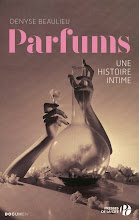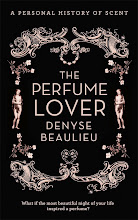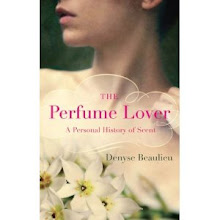
A decade after being launched, the Aqua Allegoria collection – conceived as simple two-accord eaux to bridge the gap between the grown-up compositions of the house and its classic citrus colognes – has just taken a new turn. The bottle’s been tweaked, the ad campaign shows a face for the first time, and the name gives no indication of the main accords. Though in French, nymphea is the name of the water-lily there is, mercifully, not a molecule of the dreaded aquatic note in Thierry Wasser’s blend. Flora Nymphea’s name is meant to evoke the nymph in the ad (coincidentally, it was launched at the same time as Annick Goutal’s Ninfeo Mio); it also conjures Claude Monet’s famous water-lilies series painted at Giverny and thus, Jacques Guerlain’s taste for the Impressionists.
The scent itself also veers off the path of fresh, playful eaux: Flora Nymphea is much fuller-bodied than its predecessors, and definitely a white Guerlain in the manner of Idylle, Les Secrets de Sophie or Cruel Gardénia. If it does obliquely bring water to mind, it is that its creamy, inedible texture somehow conjures soap of the chicest, most expensive kind – an effect often produced by orange blossom. The main accord here is seringa (Philadelphus coronarius), known as mock-orange in English and as “poet’s jasmine” in France, where the intensely fragrant bush is a common sight in suburban hedges. The scent of mock-orange, as re-created by Thierry Wasser (you can’t extract its essence) does take after both orange blossom and jasmine sambac. It seems pretty close to my memory of the real thing, though it’s much too early in the season to compare.
Flora Nymphea’s mock-orange/orange blossom/jasmine bouquet is embellished on top with a tiny green-pepper effect from petitgrain and the merest touch of an intensely sour, almost metallic lemon in the top notes which briefly conjures magnolia. Honey starts seeping up several hours into the development – Guerlain bees homing in on the hive – and adds a linden blossom effect to Flora Nymphea’s white floral bouquet. While the honey warms the blend and tilts it towards a touch of woodiness, the scent stays well away from animal notes: this is white floral sent to scrub up its indoles. This nymph isn’t frolicking with satyrs any time soon.
In accordance to the Aqua Allegoria’s keep-it-simple concept, Flora Nymphea isn’t going to send you nose-to-wrist for hours trying to plumb its psychological depths. But despite Octavian’s comment on 1000 fragrances on its lack of tenacity and Robin’s from NST on its fresh, dewy character, I find it’s still welded to my skin twelve hours after spraying: at this stage it’s showing signs of settling down for the night. I may just be waking up tomorrow with a cute white-wigged fairy next to me hogging the duvet. At that stage I may have to get rough.






 L'actu
L'actu 

